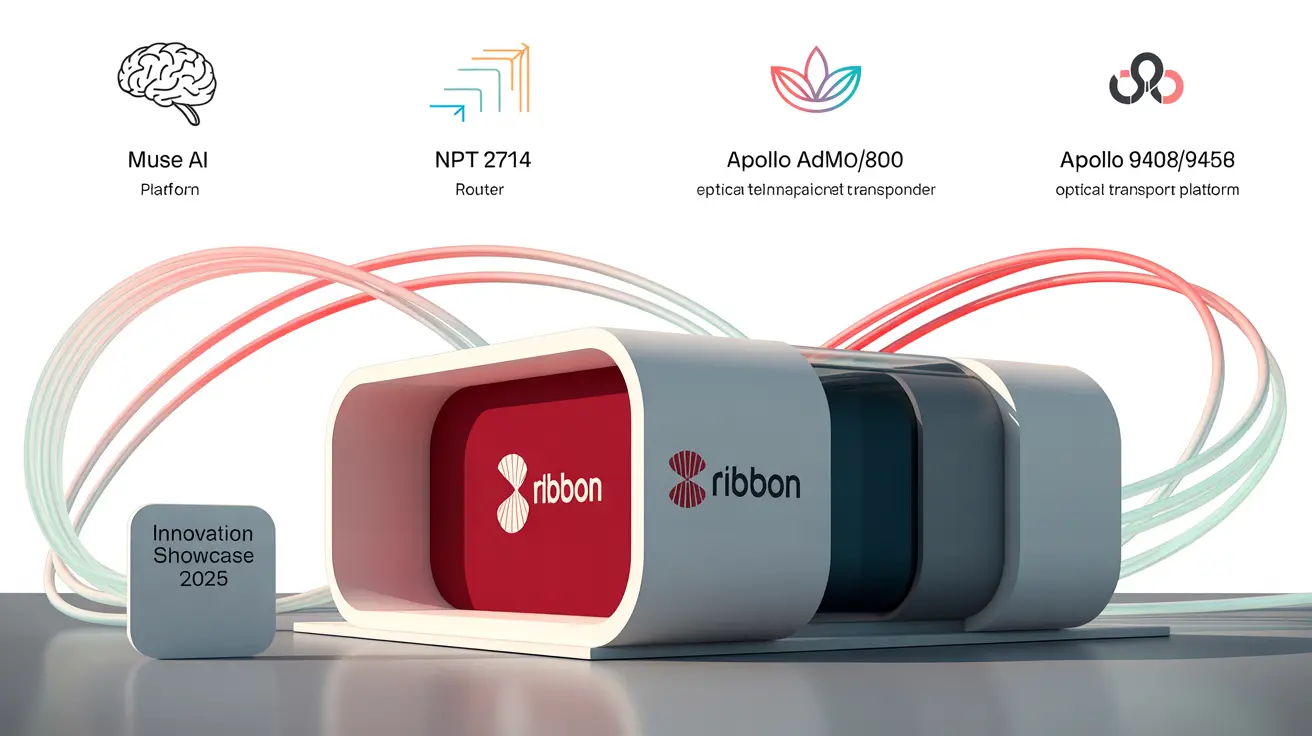
SBC SWe vs. Edge 8000 Family: Choosing a Platform for Hybrid and Cloud Networks
In today’s rapidly evolving telecommunications landscape, selecting the right Session Border Controller (SBC) platform is crucial for businesses and service providers. Ribbon Communications offers two primary solutions: the software-based SBC SWe and the hardware-based Edge 8000 Family. Both solutions provide robust security, scalability, and functionality, but they cater to different use cases. This article provides a detailed comparison of these two platforms to help you make an informed decision that aligns with your needs in the areas of cloud migration, hybrid infrastructure, and IP telephony.
Understanding Your Network Needs
Before delving into the details of each solution, it’s important to assess your current and future network architecture. Consider the following factors:
- Network Type: Fully cloud-based, hybrid, or traditional?
- Scalability: What is the expected growth in traffic and users?
- Security Requirements: What threats need to be prevented?
- Compatibility: Is integration with legacy equipment required?
- Budget: What is your budget for capital (CAPEX) and operational (OPEX) expenditures?
SBC SWe: Software Solution for the Cloud
SBC SWe is a software-based SBC solution designed for deployment in cloud environments such as AWS, Azure, and Google Cloud. It provides the flexibility, scalability, and cost-effectiveness needed to support modern VoIP networks. More detailed information can be found on the official SBC SWe product page.
Advantages of SBC SWe:
- Flexibility and Scalability: SWe can be easily scaled to meet your needs by adding or removing instances as needed. This allows you to optimize resource utilization and reduce costs.
- Rapid Deployment: SWe can be deployed quickly in the cloud, reducing time to market for new services.
- Cost-Effectiveness: SWe allows you to reduce hardware and maintenance costs, as it does not require physical infrastructure.
- Automation: SWe supports automation of management and monitoring tasks, simplifying operations.
- Integration with Cloud Platforms: SWe is tightly integrated with leading cloud platforms, ensuring seamless operation. Ribbon Communications’ focus on cloud solutions is demonstrated on the Cloud Communications Solutions page.
Features of SBC SWe:
- Support for Various Protocols: SIP, H.323, MGCP, RTP, SRTP. Detailed information on supported protocols can be found in the Ribbon Communications documentation (access to the support portal is required).
- Advanced Security Features: Protection against DDoS attacks, fraud prevention, traffic encryption.
- Quality of Service (QoS) Management: Traffic prioritization, bandwidth limiting.
- Monitoring and Reporting: Performance data collection, report generation.
- High Availability (HA) Support: Redundancy and automatic failover.
When to Choose SBC SWe:
- For cloud networks that require flexibility and scalability.
- For businesses that want to reduce hardware and maintenance costs.
- For tasks requiring rapid deployment and automation.
- For service providers offering VoIP services in the cloud.
Edge 8000 Family: Hardware Solution for Function Consolidation
The Edge 8000 Family is a series of hardware-based SBCs designed for consolidating functions and working with legacy equipment. They provide the high performance, reliability, and security needed for mission-critical applications. Information on various Edge 8000 models can be found on the official Edge 8000 Series page.
Advantages of Edge 8000 Family:
- High Performance: The Edge 8000 Family provides the high performance needed to handle large volumes of traffic. (Depends on the specific model).
- Reliability: The Edge 8000 Family is a reliable platform designed to operate in demanding environments.
- Security: The Edge 8000 Family provides advanced security features to protect your network from threats.
- Function Consolidation: The Edge 8000 Family can consolidate multiple functions, such as SBC, transcoding, and routing, into a single device.
- Compatibility with Legacy Equipment: The Edge 8000 Family supports a wide range of protocols and interfaces for working with legacy equipment.
Features of Edge 8000 Family:
- Support for Various Protocols: SIP, H.323, MGCP, ISDN, TDM. Specifications for each Edge 8000 model, including supported protocols, can be found in the Ribbon Communications documentation (access to the support portal is required).
- Advanced Security Features: Protection against DDoS attacks, fraud prevention, traffic encryption.
- Transcoding: Support for various codecs to ensure compatibility between networks.
- Routing: Intelligent traffic routing to optimize performance.
- High Availability (HA) Support: Redundancy and automatic failover.
When to Choose Edge 8000 Family:
- For hybrid networks that require integration with legacy equipment.
- For businesses that require high performance and reliability.
- For tasks requiring function consolidation.
- For service providers offering TDM and IP telephony services.

Comparison of Key Parameters of SBC SWe and Edge 8000 Family
The table below provides a comparison of the key parameters of the SBC SWe and Edge 8000 Family:
| Parameter | SBC SWe | Edge 8000 Family |
|---|---|---|
| Architecture | Software | Hardware |
| Deployment | Cloud | On-Premise |
| Scalability | High | Limited (depends on model, some support clustering) |
| Performance | Depends on cloud resources | High (depends on model) |
| Flexibility | High | Low |
| Cost | OPEX (Operational Expenditure) | CAPEX (Capital Expenditure) |
| Integration with Legacy Equipment | Limited | High |
| Function Consolidation | Limited | High |
Hybrid Infrastructure: The Best of Both Worlds
Many organizations are transitioning to cloud migration, leveraging a hybrid infrastructure that combines on-premise and cloud resources. In this case, both the SBC SWe and Edge 8000 Family can be used to take advantage of each platform.
For example, the Edge 8000 Family can be used to connect legacy equipment and secure the network perimeter, while the SBC SWe can be used to handle VoIP traffic in the cloud. This allows organizations to gradually transition to cloud technologies while maintaining compatibility with existing infrastructure.
TCO and ROI: Analysis of Total Cost of Ownership and Return on Investment
When choosing an SBC platform, it is important to consider TCO (Total Cost of Ownership) and ROI (Return on Investment). TCO includes all costs associated with acquiring, deploying, and operating the platform, while ROI shows how quickly you will recoup your investment.
SBC SWe may have a lower TCO in the long run because it does not require hardware and maintenance costs. However, the Edge 8000 Family may provide a higher ROI in the short term, especially if you require function consolidation and integration with legacy equipment. A more accurate assessment requires considering specific use cases, traffic volumes, and functionality requirements.
Migration Strategy: Planning the Transition
Migrating to a new SBC platform can be challenging. It is important to develop a clear migration strategy to minimize risks and ensure smooth operation. The migration strategy should include the following steps:
- Assessment of current infrastructure: Identify which components need to be replaced or upgraded.
- Platform selection: Choose an SBC platform that meets your needs.
- Deployment Planning: Develop a deployment plan that takes into account your availability and security requirements.
- Testing: Test the new platform in a controlled environment before migrating real traffic to it.
- Monitoring: Monitor the performance of the new platform after deployment to identify and resolve any issues.
Conclusion: The Right Choice for Your Network
The choice between SBC SWe and Edge 8000 Family depends on the specific needs of your network. SBC SWe is an excellent solution for cloud networks that require flexibility, scalability, and cost-effectiveness. The Edge 8000 Family is a reliable platform for hybrid networks that require function consolidation and integration with legacy equipment.
Carefully analyze your needs, evaluate TCO and ROI, and develop a clear migration strategy to make the right choice for your organization.
FAQ on SBC SWe vs. Edge 8000: Which Platform to Choose for Your Network?
What are the main differences between SBC SWe and the Edge 8000 Family?
SBC SWe is a software solution designed for cloud environments, providing flexibility and scalability. The Edge 8000 Family is a hardware solution focused on high performance, reliability, and integration with legacy equipment.
For what scenarios is SBC SWe best suited?
SBC SWe is ideal for cloud networks where flexibility, scalability, rapid deployment, and cost-effectiveness are required. It is also suitable for carriers offering VoIP services in the cloud.
When should I choose the Edge 8000 Family?
The Edge 8000 Family should be chosen for hybrid networks where integration with legacy equipment, high performance, reliability, and function consolidation are required. It is also suitable for carriers providing TDM and IP telephony services.
What are the benefits of using a hybrid infrastructure with SBC SWe and the Edge 8000 Family?
A hybrid infrastructure allows you to leverage the advantages of both platforms. The Edge 8000 Family can be used to connect legacy equipment and provide network perimeter security, while SBC SWe can be used to handle VoIP traffic in the cloud. This allows organizations to gradually transition to cloud technologies.
What are TCO and ROI, and how do they affect the choice of platform?
TCO (Total Cost of Ownership) is the total cost of owning the platform, including acquisition, deployment, and operation costs. ROI (Return on Investment) is the return on investment. SBC SWe may have a lower TCO in the long term, while the Edge 8000 Family may provide a higher ROI in the short term, depending on the needs.
What factors should be considered when planning a migration to a new SBC platform?
When planning a migration, it is necessary to assess the current infrastructure, select an SBC platform, develop a deployment plan, conduct testing in a controlled environment, and monitor performance after deployment.
How scalable is the Edge 8000 Family compared to SBC SWe?
SBC SWe is highly scalable, allowing you to easily add or remove instances as needed. The scalability of the Edge 8000 Family is limited by the hardware capabilities of the specific model, although some models support clustering.
What protocols do SBC SWe and the Edge 8000 Family support?
Both solutions support SIP, H.323, and MGCP. The Edge 8000 Family also supports ISDN and TDM for integration with legacy equipment. Detailed information on supported protocols for a specific model should be clarified in the Ribbon Communications documentation.

